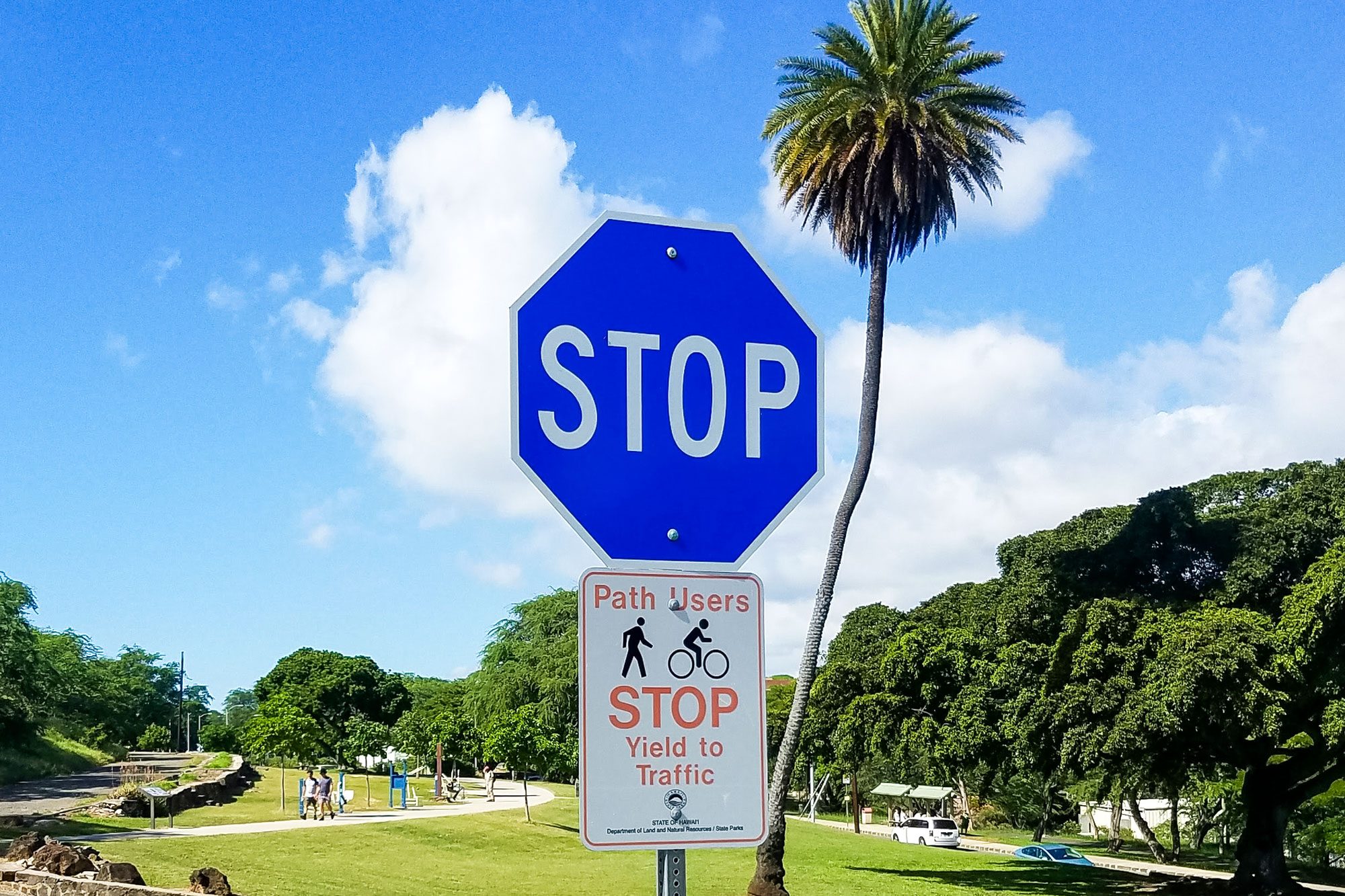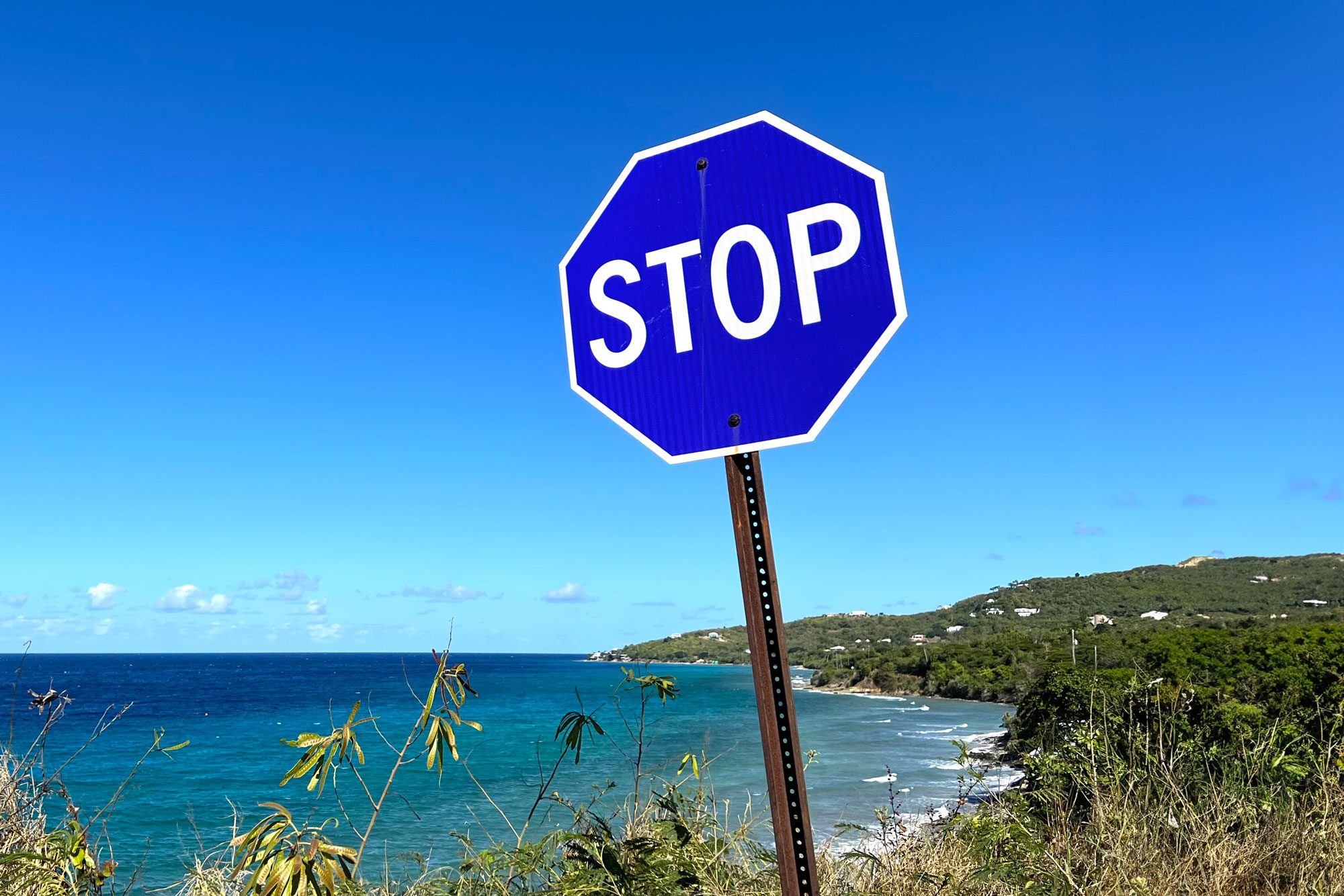Color us surprised: Blue stop signs really exist! Here's where you'll find them, what they mean and what to do if you see one on the road.

Here’s What It Means If You See a Blue Stop Sign

If there’s one rule of the road we learn long before driver’s ed, it’s this: Red means stop. Even a toddler can tell you the right shade of a stop sign. Since roughly the 1950s, all government-issued stop signs in the United States have been red.
But you might be surprised to learn that for the 30 years prior, yellow stop signs were prevalent. Weird to think about in retrospect, right? But even more of an oddity is the elusive blue stop sign. (Yes, they exist!)
So where can you find blue stop signs? And what do they mean—you know, aside from “stop”? We asked two transportation-planning and infrastructure-management experts, and here’s what they had to say.
Also, find out the reason for the green lights on a car.
Get Reader’s Digest’s Read Up newsletter for more interesting facts, travel, tech and humor all week long.
What is a blue stop sign?
A blue stop sign is exactly what it sounds like: an octagonal sign indicating you should make a full and complete stop before driving again … that happens to be blue. Blue stop signs aren’t issued by the U.S. Department of Transportation, so what’s their deal?
“The short answer to the question about blue stop signs is that in the U.S., the shape and colors of signs (including stop signs) are identified in a document known as the Manual on Uniform Control of Traffic Devices,” says Shashi Nambisan, PhD, director of the Transportation Research Center at the University of Nevada, Las Vegas. “To the best of my knowledge, blue-colored stop signs are not permitted on public roads. However, it is possible that they may have been installed on private property.”
Essentially, if a property owner feels it’s necessary to warn drivers of any potential hazards that could require a stop, they might install a blue stop sign at their own cost.
Where can you find blue stop signs?

Like Japan’s blue stoplights, blue stop signs are a traffic feature primarily reserved for a specific island—Hawaii, to be exact. As Nambisan points out, you may come across them on private property across the country. But sightings of blue stop signs are reported most often in the Aloha State, with drivers clearly bewildered by their appearance.
All of this begs the question of whether or not we have to stop for a blue stop sign if it isn’t government-issued.
“While not a legal expert, I imagine that most people would treat a blue stop sign the same as they would a red stop sign if they encounter one,” says Nathan Kautz, a senior transportation safety engineer with Kittelson & Associates, a transportation engineering and planning consulting firm. “If you encounter an intersection with no traffic control (a signal that is not working due to a power outage, for example), you are to treat it like an all-way stop in my state of Florida. I would assume that, since stopping would happen in either condition, law enforcement may have grounds to write a ticket for something, even if it is reckless driving.”
Why are stop signs typically red?
There are a couple of reasons why stop signs across the globe are typically red. First, red is the easiest color to see from the farthest distance. This gives drivers plenty of time to identify the stop sign and slow down. Second, red is often considered the color of danger, suggesting you proceed with caution.
That’s why car brake lights and our traffic lights are all red, warning of potential danger and telling drivers to stop. The same is true of the stop sign.
About the experts
|
Why trust us
At Reader’s Digest, we’re committed to producing high-quality content by writers with expertise and experience in their field in consultation with relevant, qualified experts. We rely on reputable primary sources, including government and professional organizations and academic institutions as well as our writers’ personal experiences where appropriate. We verify all facts and data, back them with credible sourcing and revisit them over time to ensure they remain accurate and up to date. Read more about our team, our contributors and our editorial policies.
Sources:
- Shashi Nambisan, PhD, director of the Transportation Research Center and professor in the Department of Civil and Environmental Engineering at the University of Nevada, Las Vegas; interview, November 2024
- Nathan Kautz, senior transportation safety engineer with Kittelson & Associates; interview, November 2024























